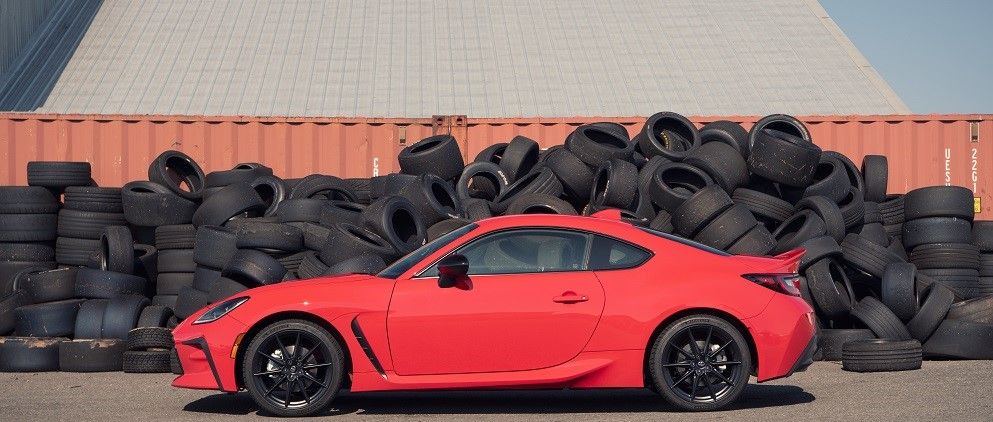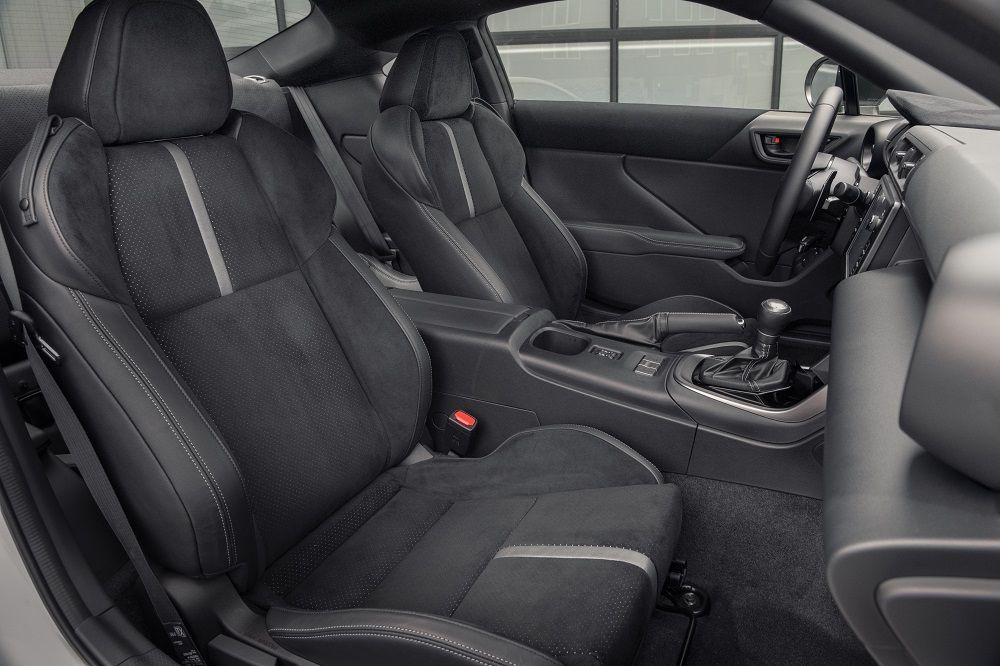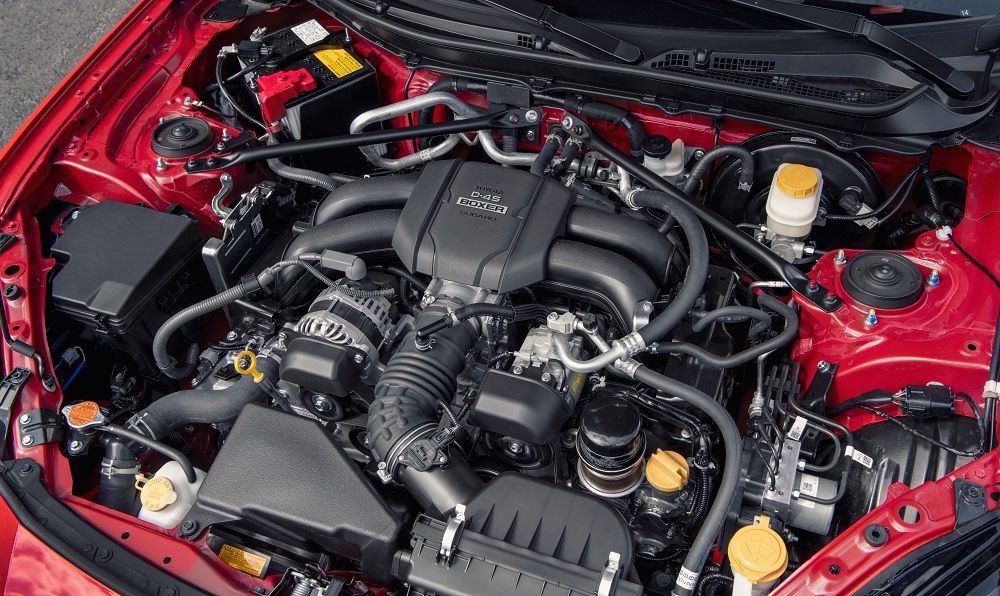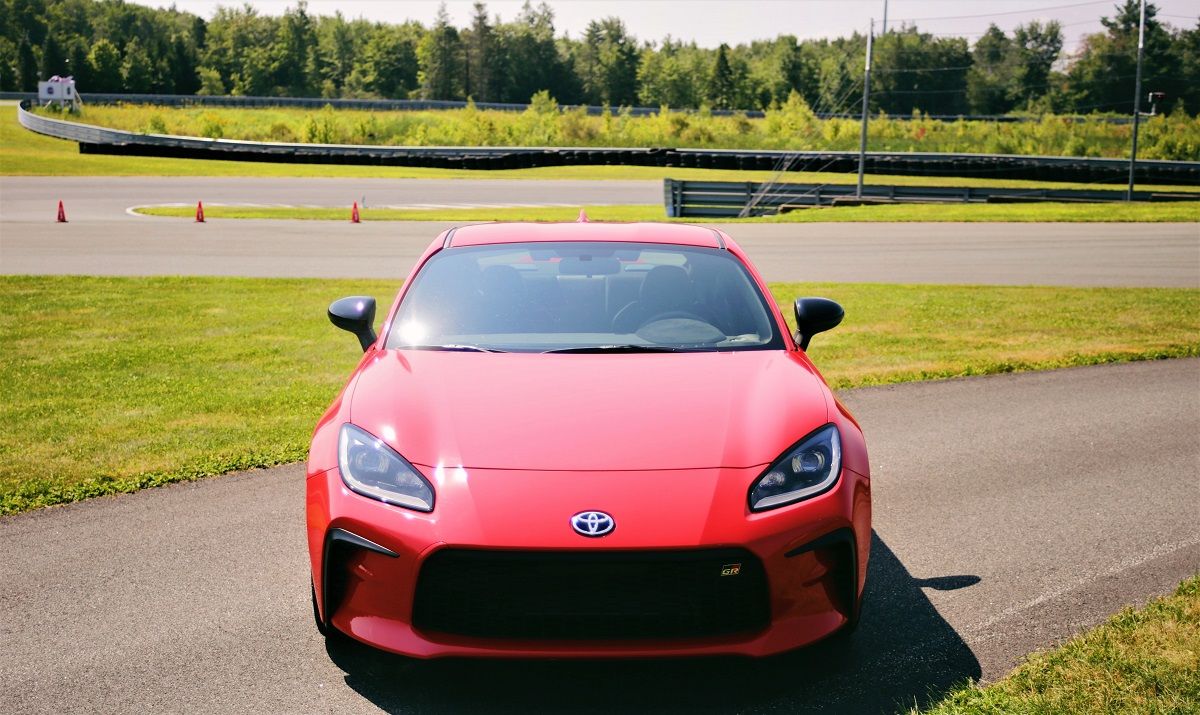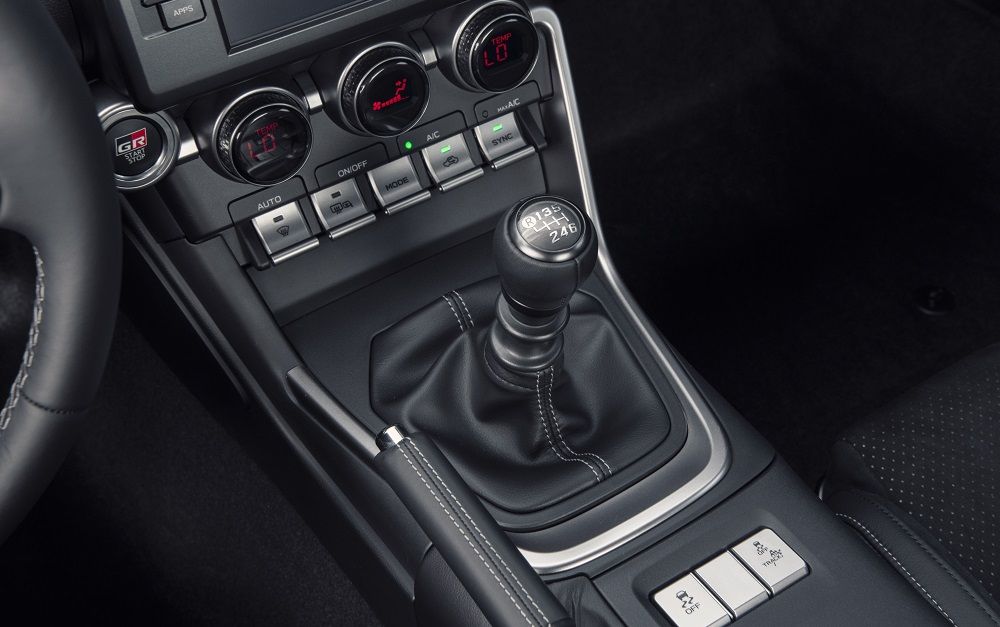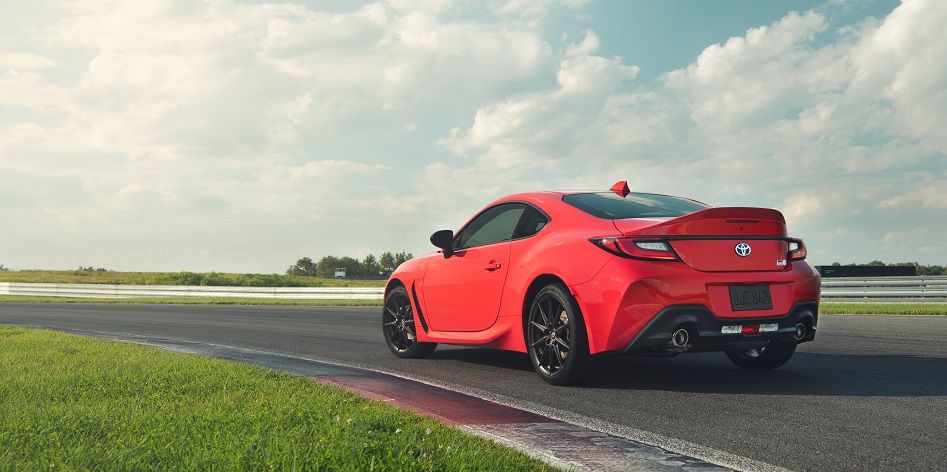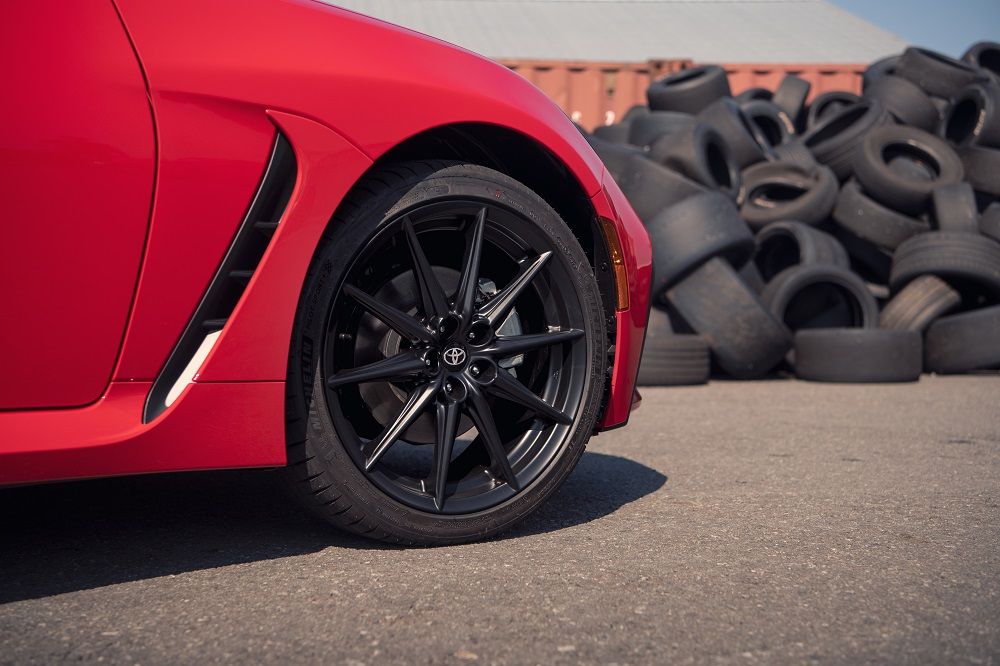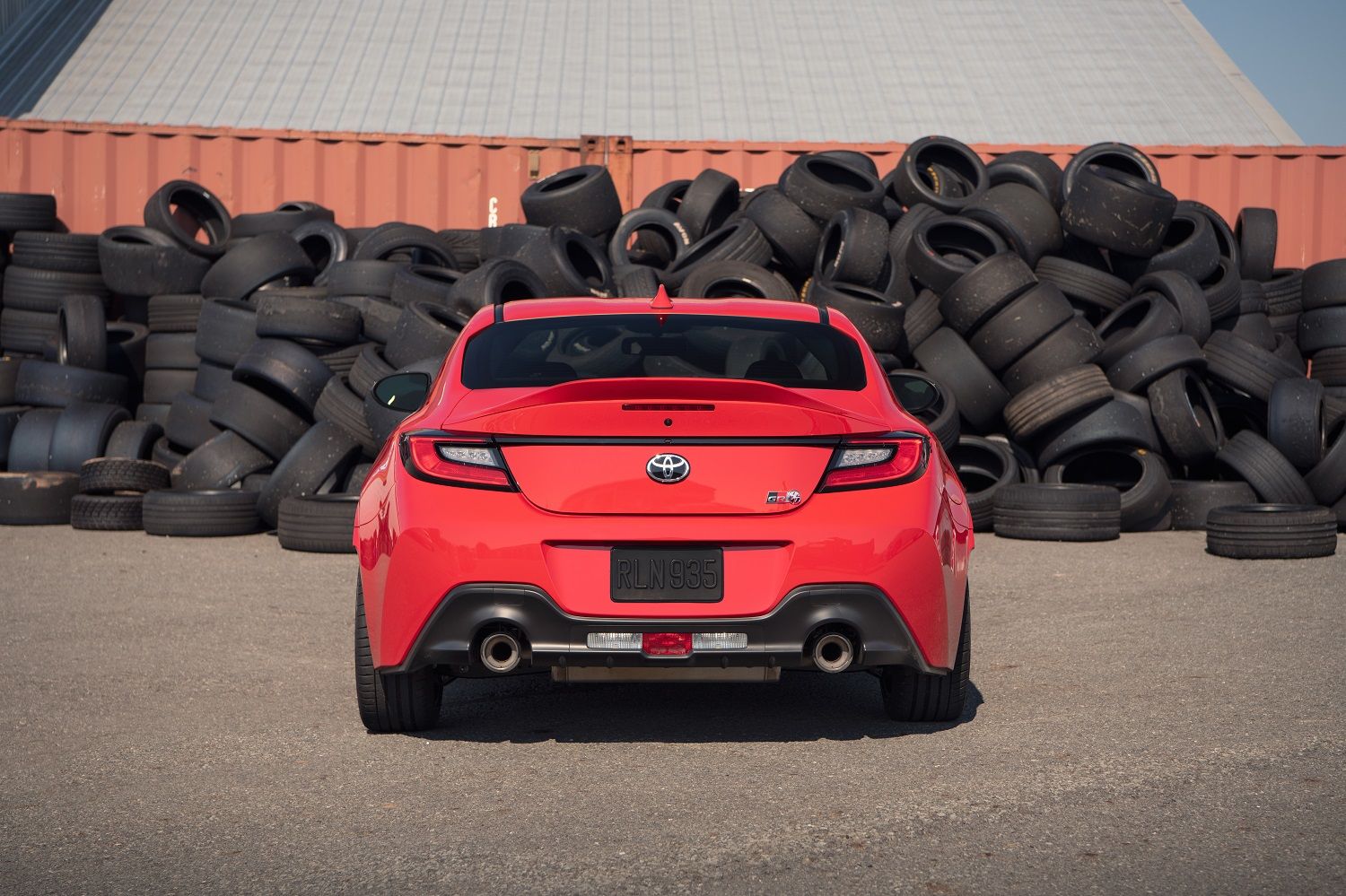The new 2022 Toyota GR 86 has debuted, and car gods be praised: it can still be enjoyed with three pedals and a stick. This aspect, and several others, indicate that this latest ZN8/ZD8-generation 86 is still designed and engineered with enthusiasts in mind. Affordable, manual-transmission-equipped enthusiast cars will be around for a while yet. However, there’s a lot at stake with the new Toyobaru; the old ZN6/ZC6-generation was very well-received by enthusiasts. Will this new one be, too?
There are a host of upgrades over the old generation across the board, from its engine, to its styling, and even its suspension tuning. Does it all add up to a solid enthusiast car that’s a good next step for the badge? By the way, the new addition of GR on said badge stands for Gazoo Racing, the international performance tuning division.
Toyota USA recently flew me out to the 2022 GR 86’s media drive event at Monticello Motor Club in New York to find out. Not just to give me a thorough presentation on everything that's new, but to also spend a good amount of time behind the wheel on track, as well as on the area’s beautiful surrounding roads. They paid for the flight, hotel accommodations, meals, and transit during my entire stay.
What’s the brand-new 86 like? Is it a solid next step? I won’t spoil too much up front—but get excited.
The GR 86 Sports A Fully Redesigned, Athletic, And More Taut Figure
What I noticed immediately while walking up to the GR 86 was that it’s indeed still a small sports car. In this age of gigantic a-pillars, crossover SUVs, and bloated curb weights, it’s a big sigh of relief to approach something as small and taut as this. The numbers add up, too: curb weight hovers around 2,800 pounds for both the base and Premium trims.
Dimensionally, the new 86 is wider than the old one, with a slightly longer wheelbase and wider track, but no change in its overall length. It sits with a quintessential sports car stance: wide rear fenders, barely any overhang, and muscular bodywork throughout. What’s rather impressive, is its front vents are actually functional; they help direct air around the front tires, improving stability at speed. So is the rear duckbill spoiler on the Premium trim, Toyota’s engineers state that it creates downforce, which adds to overall stability at speed. Its looks are an improvement over the old (er, current) generation, though still features some carryover and homages.
Refreshingly, the GR 86 is available in several nice colors that aren’t just black, white, or silver. Track bRED is my personal favorite, as it's one of the best reds I’ve ever seen in person, especially on top of the Premium trim’s black wheels. Neptune Blue carries over from the previous (er, current) generation, and as a sort of Homage to the well-acclaimed 80s AE86, Trueno Blue, which is a very nice dark blue, which weirdly reminds me of BMW’s Mystic Blue.
For those who’ve been paying attention to Gazoo Racing’s international efforts, the wheels on the Premium trim are the same wheels found on the GR Yaris, the wild little homologated hot hatch that we don’t get in North America. Also, if you’re looking to impress your friends: the front grille mesh is comprised of little miniature Gs, building on the significance behind GR being added to the 86’s name.
A Nice Bump In Interior Comfort And Visibility
Stepping into the GR 86’s interior revealed a very driver-focused interior layout. Both the base and Premium trims' seats had good bolstering, the seating position was quintessential 86 being nice and low-slung, and the door cards sitting up nice and high. The gauge cluster and center screen looked great, and were a much welcomed update over previous generations. The base trim gets normal-looking, decent material covering its seats, whereas the Premium gets leather and Alcantara-clad seats and accents throughout.
Considering one has to also pony up for the Premium to have advanced driver assistance systems, such as Blind Spot Monitor With Rear Cross Traffic Alert, this helps make the case that doing so is the move. Oh, and the rear duck spoiler and black GR Yaris wheels. My recommendation is to definitely save for the Premium, whatever its MSRP shakes out to be.
Looking from the inside-out, overall visibility was quite good; I could’ve sworn the over-the-left-shoulder blindspot wasn’t as bad as the previous 86. The inside felt airy, yet tailored for two occupants; I always had a solid sense of its small, sports car size, but never felt cramped. Due to its wider track and absence of knee padding on the doors, Toyota confirmed that it’s a tad more spacious than before. I also found stepping in and out to be easier than most sporty, enthusiast-centric cars, including various sports sedans I’ve driven over the past couple of years.
Fitment-wise, my six foot three stature had no issue climbing in and out, and headroom was plenty accommodating. I was able to rip laps around Monticello, wearing a helmet, by simply dropping the seat as low as it’d go, and then reclining it ever-so-slightly-more than I normally would. The driving position was all-around comfortable; I imagine most, if not all body types will think the same.
The GR 86’s 2.4-Liter Engine Features More Power, Sooner, Than The Old Generation’s 2.0-Liter Lump
My immediate impression of the new GR 86’s power plant was its significant increase in refinement, followed closely by a sturdier mid-range on the tachometer. The GR 86 and its platform-mate the Subaru BRZ once again share the same naturally-aspirated, flat-four engine, with a displacement that’s been bumped up from 2.0 to 2.4 liters. Power comes in at 228 horsepower and 184 pound-feet of torque, a nice, healthy increase. Toyota achieved these figures by increasing the cylinder bore from 86mm to 94mm (goodbye, excessive 86 symbolism), as well as bolting on larger intake and exhaust manifolds, and revising the ECU tuning.
This new flat-four is also significantly smoother than the previous one. The 2.0 sounded like a cross between a sewing machine and agricultural machinery as it climbed up to redline, the 2.4 is much smoother. The note is nicely pronounced as well; I’m not sure if this is due to piping sound in via speaker or a small, echo-chamber-like tube strapped to the intake, but I got all the aural cues I needed for rev matching and knowing my proximity to redline.
The torque bump was significant as well. The old 86 had just 156 pound-feet of torque, which peaked at 6400 rpm. Now, all 184 pound-feet peak 2700 rpm sooner, giving it a very healthy midrange. Everyone and their mother seemed to complain about the old one’s torque curve, and Toyota’s answered their wishes.
This meant that having a healthy helping of right-footed courage around Monticello Motor Club was a more thrilling experience behind the GR than its 2020 predecessor, which Toyota had on-hand for comparison. On the track’s carousels, sweepers and decently-long straightaways, I wasn’t as compelled to downshift and rev it out as like I was behind the wheel of a 2020 model year 86 Hakone Edition. The additional torque helped carry the little 86 noticeably better up hills, too.
Finally, gaining revs was an overall more enjoyable experience in the GR; it didn’t sound rough up top, but rather had a smooth, well-balanced, four-cylinder roar. The old 2.0-liter sounded like a cross between a sewing machine and a tractor at anywhere north of 3500 rpm.
The previous (er, still current) was known for needing cooling modifications if it saw more-than-occasional use on track in hot climates. Enthusiasts who intended to mob them on track in Southern California, the Southeast, Northern California, and so on, considered an oil cooler and/or upgraded radiator a very necessary addition. I asked Toyota representatives if this was factored into the new 86’s engineering; was the new 86 designed from the factory to handle heat better? They explained that they hadn’t heard of this being factored into the new 86, and expected the aftermarket to continue filling in this need.
I think the fact that the new grille is substantially larger and more open than the old 86’s will aid in cooling, but it looks like enthusiasts in hot climates might still have to seek aftermarket methods for keeping their 86s cool and healthy on track.
A Manual Transmission With More Refinement And Precision
Transmitting these new levels of horsepower, torque, and heat to the GR 86’s rear Torsen limited slip differential was nothing short of joyous in each of the available six-speed manual testers at Monticello. The broader power band and smoother engine was complemented by a more direct, shorter-throw shifter over the old (er, again, current 86), good pedal spacing, and excellent clutch feel. The clutch had good weight and spring to it, too, making rev-matching no hard task. What's interesting about this is, it's the same TL70 gearbox that was in the previous generation; I'm assuming Toyota made a few tweaks.
It seemed like Toyota took advantage of the broader torque curve by lengthening some of the gears, especially third. With enough courage I was comfortable staying in third gear for most of Monticello’s roller-coaster-like layout.
I also had the opportunity to drive an automatic-equipped GR 86, and I didn’t hate it! In fact, I was quite impressed by this six-speed conventional auto’s shift logic in Sport Mode. Toyota states that it utilizes various sensors throughout the car to do a substantial amount of machine learning (I’ll spare you the “Skynet is learning” jokes). It figures out optimal shift points based on the variables it's getting from various G-sensors, as well as how much gas and brake pedal force is exerted. Over time on track, it’ll conform to a driver’s inputs, creating, in a sense, customized transmission modes. Absolute-most importantly: it did a great job at not upshifting mid-corner on track.
Making Something Great Even Better: The GR 86’s Chassis Is Nothing Short of Excellent
Finally, here’s where all the rubber hit the road (pun sort of intended): every upgrade and likeable trait came together and accompanied the chassis so well on Monticello’s twisty circuit. Grip was good out of the box in the base trim with its 215/45/17 Michelin Primacy HPs (carried over from the current 86), but the Premium’s 215/40/18 Michelin Pilot Sport 4s did far better by feeling more confident under braking and through high-speed corners. I felt like I could get on the GR 86’s increased power, sooner, through both long corners and tight sections.
Body roll was very well contained for sporting conventional, passive dampers all around. Like the old generation, the new 86 features MacPherson front suspension and fully-independent, multi-link rear suspension. However, Toyota states that they went to great lengths tuning the suspension for improved performance over the old 86, as well as to make it feel sharper than its sibling, the Subaru BRZ. The front springs have added rebound for maintaining a better contact patch, and chassis rigidity has been upped significantly. The old 86 had excellent overall rigidity; Toyota states the new one is even better, thanks to use of high-strength steel in key areas, aluminum engine mounts, a stiffer rear subframe, and added bracing throughout.
But that’s not all: the front fenders, hood, and roof are all made of aluminum, the front seats are lighter than the previous gen’s, and the muffler and driveshaft have been lightened as well. This means it has stiffer construction, plus the center of gravity is now 1.6mm lower, in a car that was already well-acclaimed for its low center of gravity.
Even with no electronic impediments, the chassis felt very neutral and confident. Rolling over curbs and tracking out as far as possible to make the best line was never-ending fun. When I took a more unconventional line, such as cutting through the grass slightly through a kink at the back of the course, the chassis was never upset enough to turn on me. Turn-in and rotation under heavy braking from some pretty impressive speeds was devoid of drama, and figuring out which wheels had weight on them through varying complexes of corners was a snap; the chassis was plenty communicative.
A Solid Next Step For Toyota
The 2022 Toyota GR 86 is an excellent next chapter in the Toyobaru timeline. It’s an all-around upgrade, though not terribly foreign-feeling from the old 86. Plus, thanks to its nicer interior comfort and tech amenities, as well as great visibility, it’s even nicer to live with day-to-day. Toyota knocked it out of the park with the new GT 86. My complaints are minor, and will surely be easily solvable in the aftermarket. Speaking of the aftermarket, I can’t wait to see how extensively it flourishes with the 86, too; if it’s anything like the previous one, we’ve got so much to be excited for.

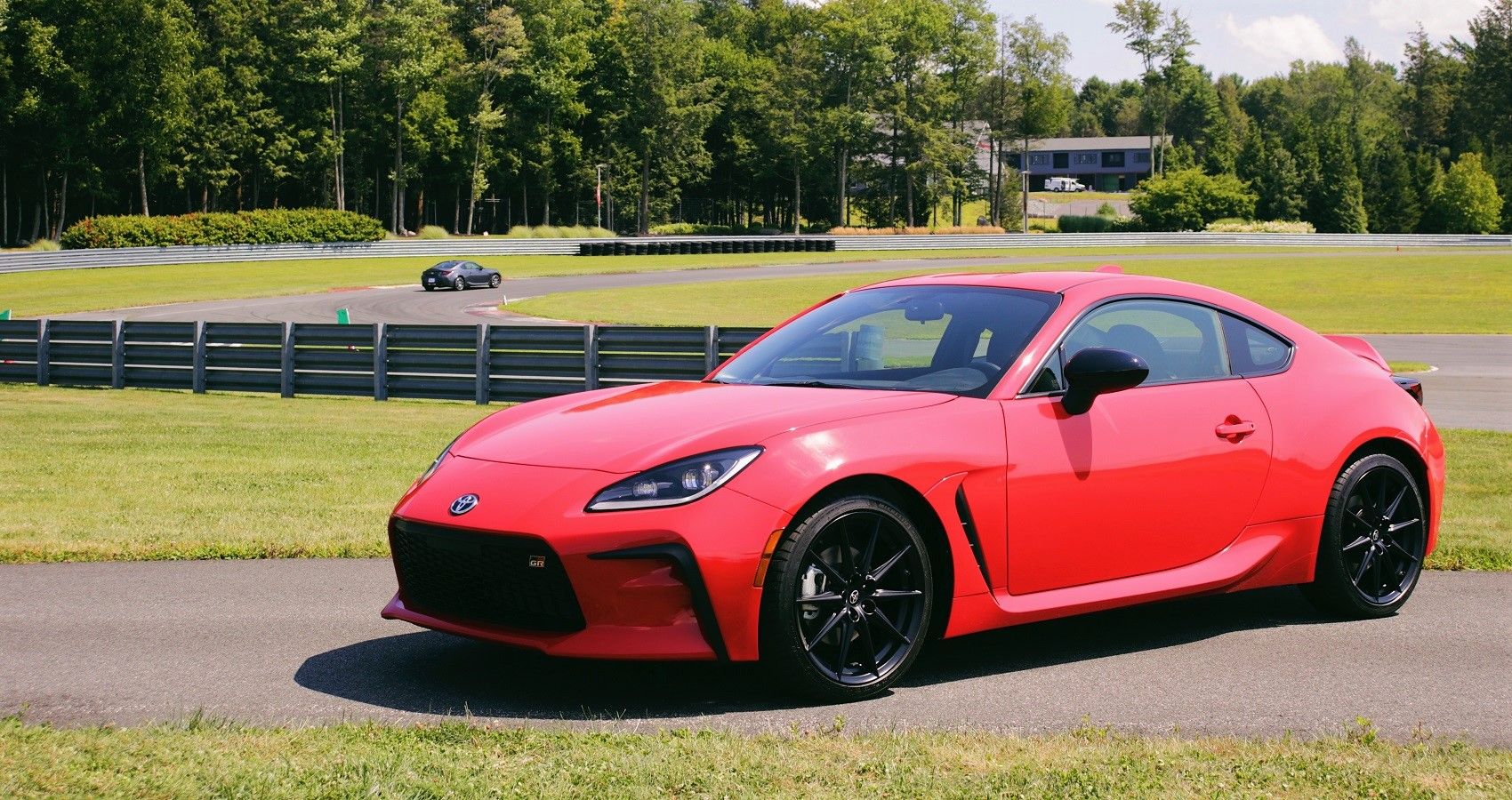
.jpg)
